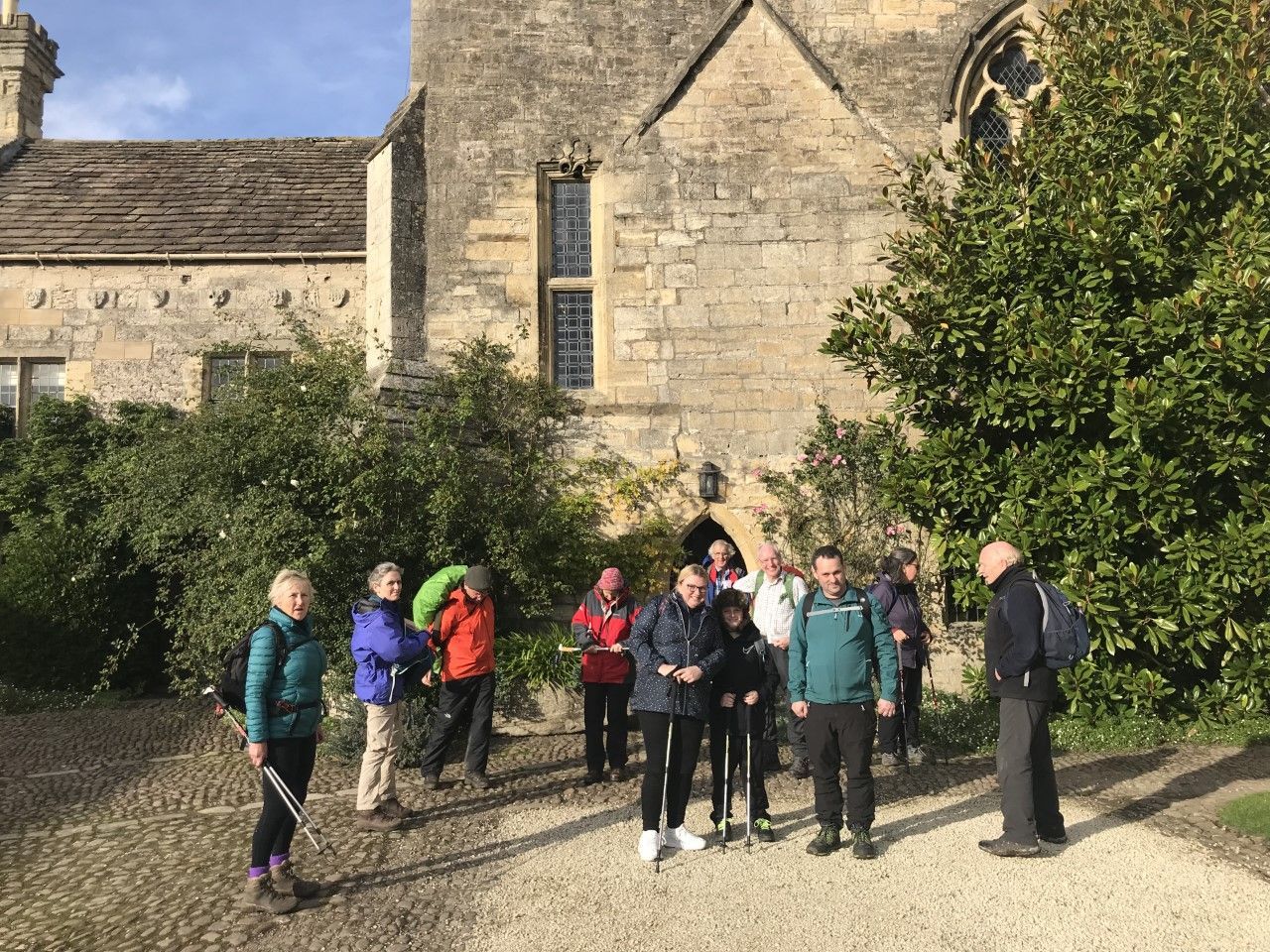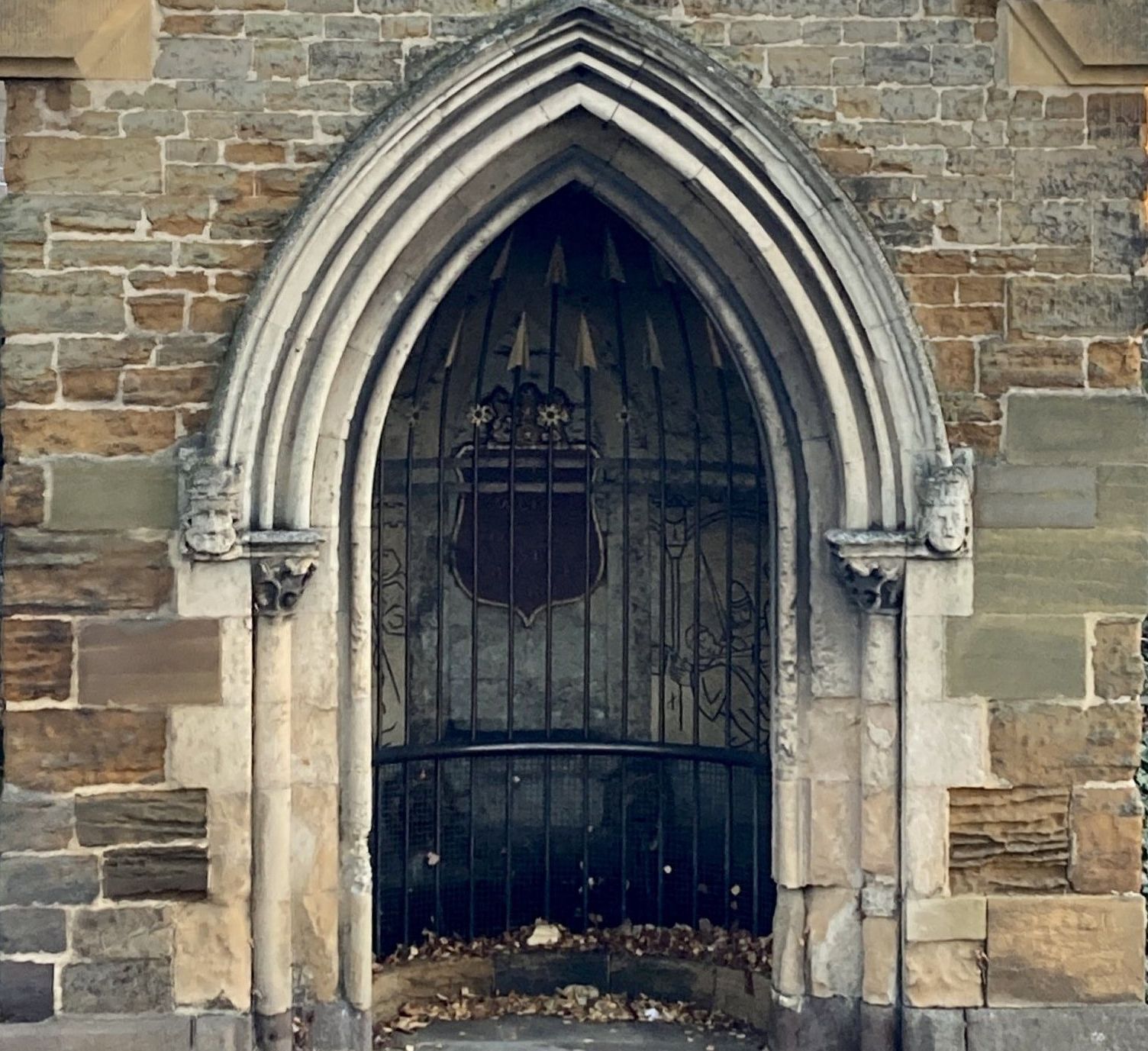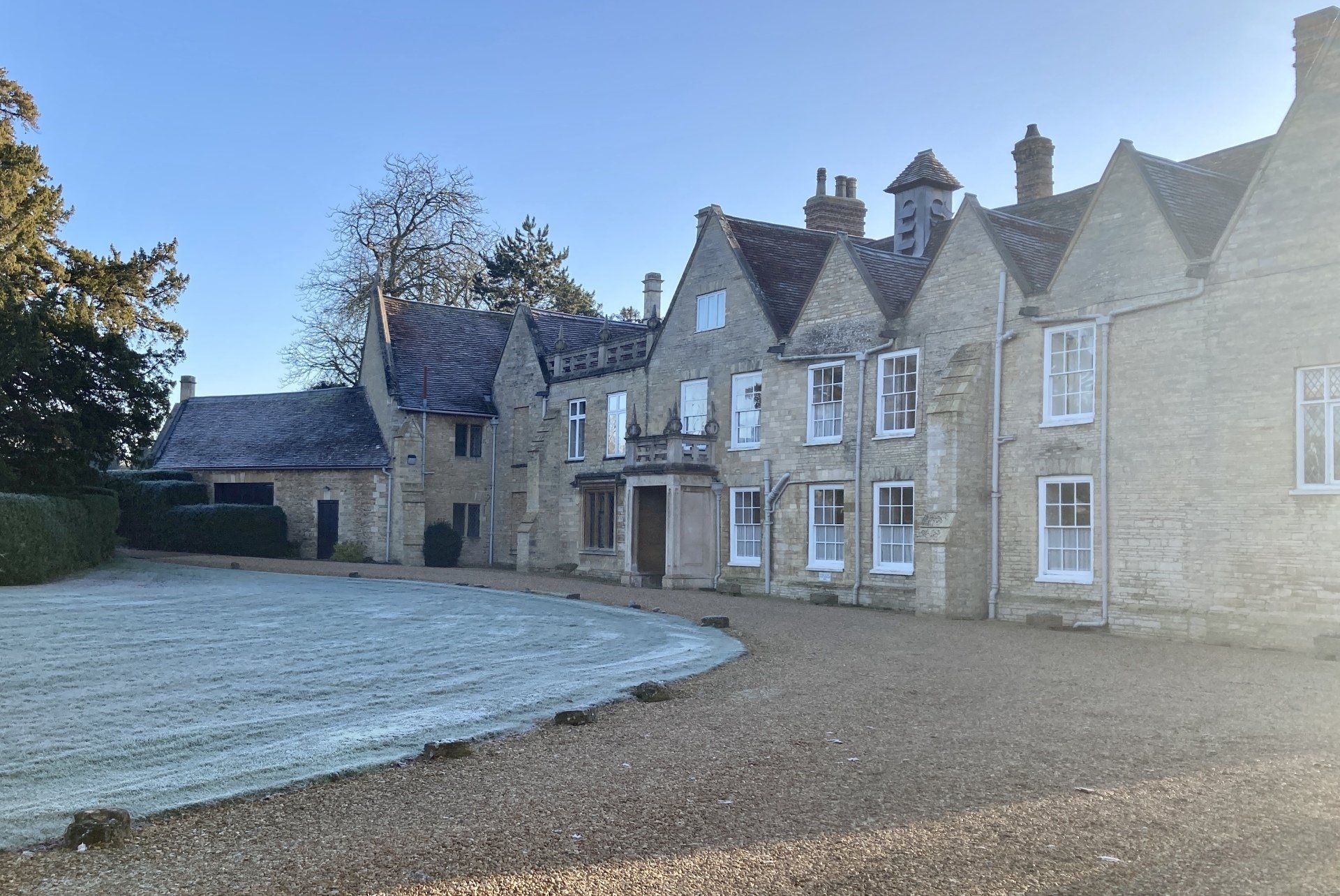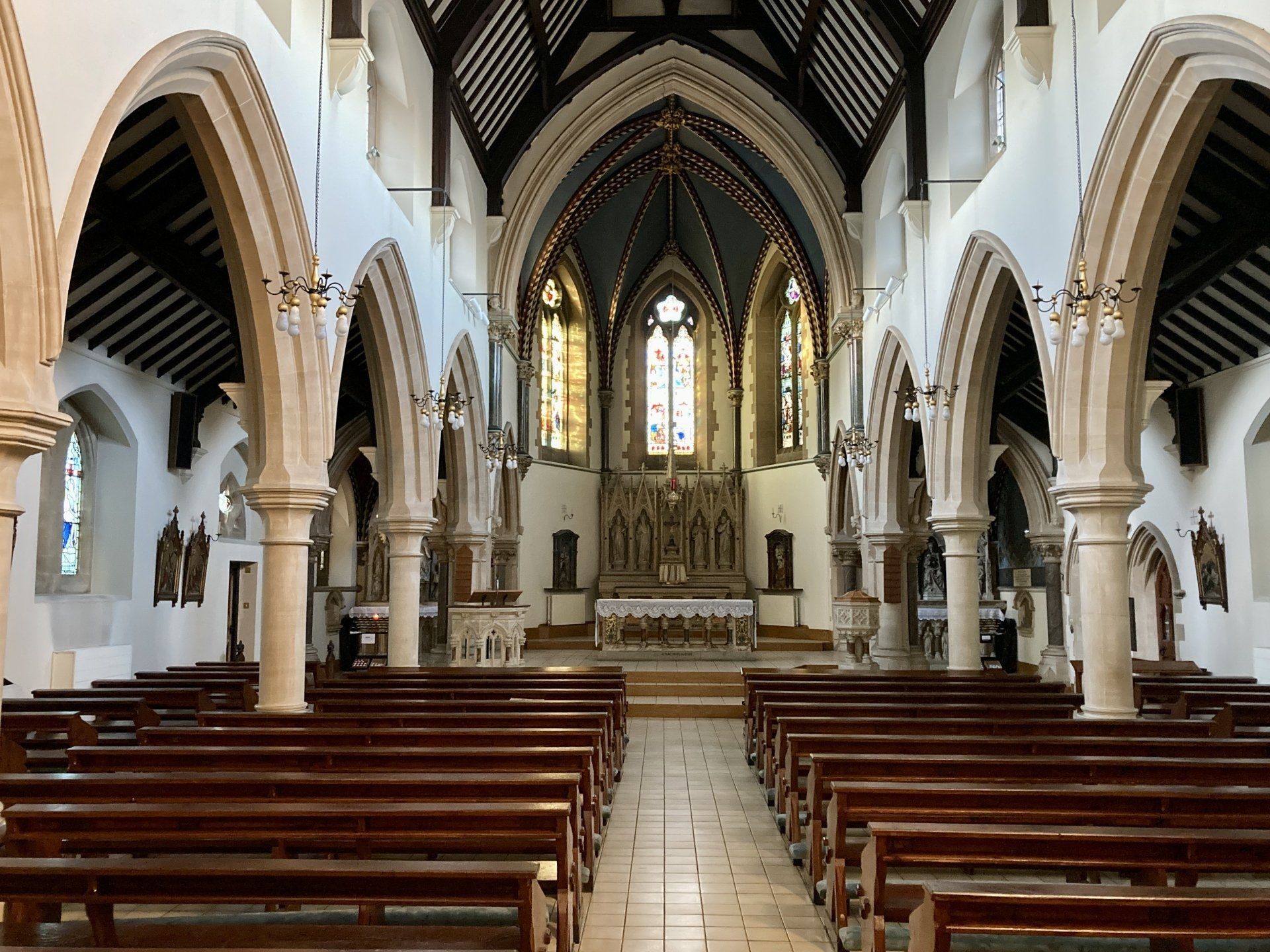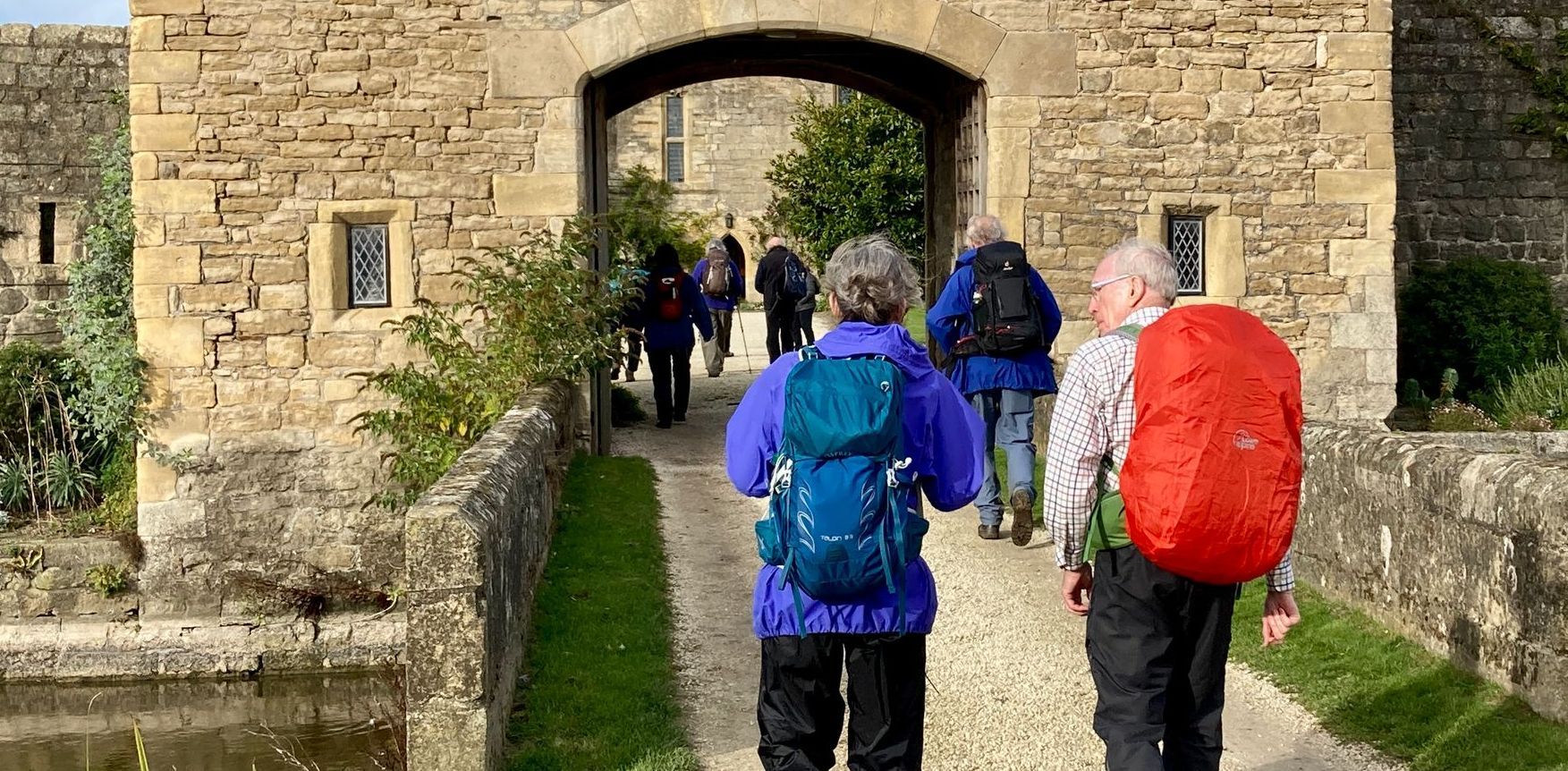The Way of Our Lady of Guadalupe
A Pilgrim Way for the Diocese of Northampton from the Cathedral of Our Lady Immaculate & St Thomas of Canterbury in Northampton to the Diocesan shrines at Great Billing and Bedford.
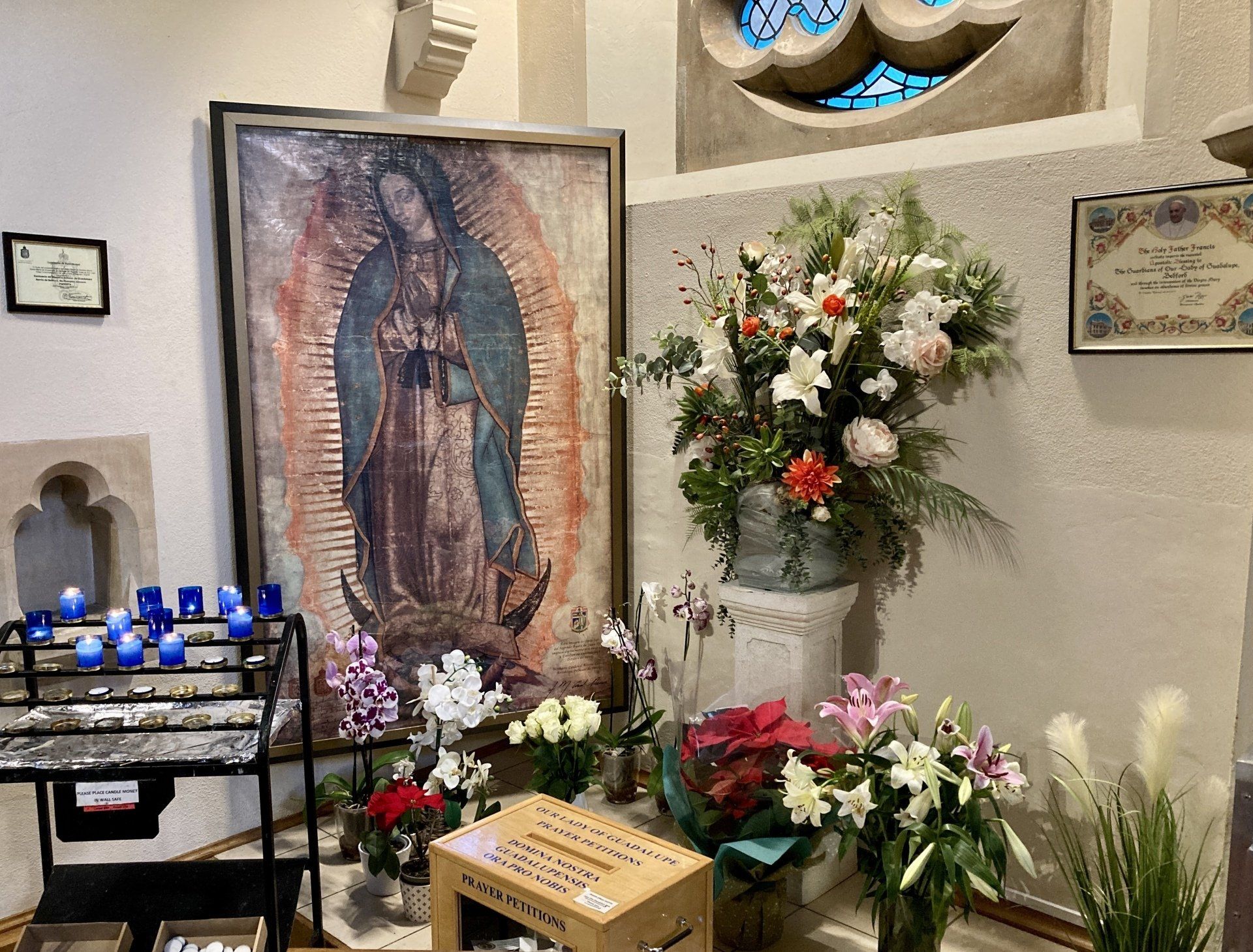
The Shrine of Our Lady of Guadalupe
About the route
In 1531 Our Lady is said to have appeared in Guadalupe, Mexico as the pregnant Mother of God to a peasant named Juan Diego. She left an image of her appearance on his cloak, which still exists in the Basilica of Our Lady of Guadalupe in Mexico City. A replica of this image can be seen in the Church of the Holy Child & St Joseph in Bedford. It is an important shrine for Catholics of Mexican heritage.
After leaving the Cathedral the Way passes (St Thomas) Becket's Well then alongside the River Nene to Great Billing and the Shrine of Our Lady of Perpetual Succour. The route passes through Olney and then beside the River Great Ouse to Turvey with its working Abbey and Monastery. The Way visits Emmaus Village Carlton, a community for formerly homeless people, then on beside the River again to reach Bedford. The Way is relatively flat.
You can find out more about the Way and download the GPX file by clicking on the LEARN MORE tab in the
interactive map below
Guidance
Using the tabs in this section you can find the information you need for your pilgrimage.
The Outer Way provides practical advice about the route.
The Inner Way describes the spiritual highlights.
Using the button below you can download details of the inner and outer ways and the walking guidance and maps.
Stages: route, food & drink, accommodation and public transport
1. The Cathedral of Our Lady Immaculate & St Thomas of Canterbury in Northampton to the Shrine of Our Lady of Perpetual Succour at Great Billing: 6.7 miles
The Way travels south from the Cathedral through central Northampton to reach St Thomas Becket’s Well, then joins the River Nene Way, then passes north through suburbs to the Shrine in Great Billing on the eastern outskirts of Northampton.
Northampton has central national rail and coach stations. From Great Billing it is possible to take a bus back to central Northampton by walking to the Maidencastle bus stop and taking the 21 Lilac bus to North Gate bus station. (NB please check timetables, link below). There is plenty of food and accommodation in central Northampton. In Great Billing village there is a pub, The Elwes Arms.
2. Great Billing to Olney: 11.29 miles
The Way is east towards Ecton where it diverts south, crossing the River Nene to reach Cogenhoe. The route joins the Northamptonshire Round path to Yardley Hastings and then on along paths and a lane to Olney and the Church of Our Lady Help of Christians.
There are infrequent buses from Cogenhoe to Northampton. The 41 bus runs twice a day from Olney to Northampton, calling at Yardley Hastings. In Cogenhoe there is a pub, The Royal Oak, and a Londis corner shop. In Yardley Hastings there is pub, The Rose & Crown, and a corner shop. In Olney there are several pubs, restaurants, supermarkets and cafés as well as accommodation at the Queen’s Hotel and a couple of b&bs. There may also be Airbnb accommodation in the area.
3. Olney to Turvey: 4.73 miles
The Way leaves Olney to the south, crossing the River Great Ouse to reach Clifton Reynes, then Newton Blossomville before crossing the River again to Cold Brayfield and for a third time to reach Turvey.
There are twice daily buses from Turvey to Northampton and more frequently to Bedford.
There are pubs in Clifton Reynes and Newton Blossomfield, and two in Turvey. There is a small shop and a post office in Turvey. The guest house at the Abbey is currently not open, but the Monastery guest house provides self-catering accommodation (see links below).
4. Turvey to the Shrine of Our Lady of Guadalupe, Bedford: 10.78 miles
The Way turns north to visit Emmaus Village Carlton and then east to Stevington where it briefly joins the John Bunyan Trail, commemorating the Puritan author of ‘Pilgrim’s Progress’. The Way passes through Bromham and Great Denham and finally follows the north bank of the River Great Ouse into central Bedford and the Shrine of Our Lady of Guadalupe in the Church of the Holy Child & St Joseph.
Bedford has national railway and coach stations. There are trains to Northampton and twice daily direct buses or more frequently via Milton Keynes Coachway. Emmaus Village Carlton has a café and bistro (see link below for opening times). There are pubs in Stevington and Bromham and all usual facilities in Bedford.
Public transport links
Trains:
https://www.nationalrail.co.uk/
Buses: https://www.smartmovenorthamptonshire.net/bus
https://www.stagecoachbus.com/regional-service-updates/east/bedfordshire
Coaches:
Pilgrim people and places
The Cathedral of Our Lady Immaculate & St Thomas of Canterbury, Northampton
The Cathedral is built on the site of the former Cluniac Priory of St Andrew, founded between 1093 and 1100. The Scottish Franciscan philosopher and theologian John Duns (commonly known as Dun Scotus) was ordained into the priesthood at St Andrew's in 1291. St Thomas Becket stayed in the Priory during his trial in 1164 and before sentencing, he escaped from the Priory to France.
The Cathedral originated as a small chapel and residence in 1825, both of which survive. A further church was built in the 1840s to designs by A.W.N. Pugin. Following the restoration of the hierarchy and the creation of the Diocese of Northampton, E.W. Pugin prepared ambitious designs for a new cathedral in 1860, but these were only partly implemented. Much of the earlier church survived until the 1950s, when it was demolished to make way for a new tower, transepts and chancel, built to designs by A. Herbert. The interior has undergone several re-orderings, the last in 1998.
Before you set off look at the triptych at the east end of the Cathedral. The central subject is the dove of the Holy Spirit superimposed upon a huge cross and hovering above the apostles. Where will the promptings of the Holy Spirit lead you on your pilgrimage?
In October 1163 King Henry II was at Northampton and summoned Becket to meet him outside the town, probably where Becket’s Park is today. They spoke for over an hour, but at last Henry lost his temper and the two rode off. It was perhaps at this moment that Becket drank at the well.
Shrine of Our Lady of Perpetual Succour, Great Billing
This Church owes its existence to the Elwes family of the now-demolished Billing Hall. In 1866 Valentine Cary Elwes inherited the estate. When he and his family converted to Catholicism in 1874 a chapel was set up in the Hall, which was replaced in 1878 by this church in the village. Its white walls and tower give it a Mediterranean character and inside it is charmingly neo-classical.
As the Shrine of Our Lady of Perpetual Succour the altar incorporates a copy of this famous icon of Mary. In the Eastern Orthodox world icons are more than beautiful images, rather they help us connect with God and each element of the icon has a meaning. In this image the Christ Child grasps his mother’s hand as though he is frightened and in His hurry Jesus has almost lost one of His sandals. Mary’s eyes, filled with compassion and love, are directed toward us. What message does the icon convey to you?
The Church of Our Lady Help of Christians & St Lawrence, Olney
In penal times Catholicism was kept alive in the area by the local Throckmorton family and in 1900 the site in West Street was purchased with their help. At the same time exiled French Sisters of the Congregation of the Holy Ghost of St Brieuc moved to Olney and then opened a school and convent next to the site. The Church was opened in 1906 and soon after a chapel was added at right angles to the original building. In 1936 the nave was extended to make a T shape. In 1990 three more extensions were added and the orientation changed by 90’, making a large square with a narthex and a side chapel.
The stone relief Stations of the Cross date from the 1930s and are by Lindsey Clark in a style reminiscent of Eric Gill, who made the Stations in Westminster Cathedral. Before you set off again, take a few moments to follow and reflect on them. What crosses are you carrying? We all stumble along our ways through life, and we may find ourselves the object of ridicule and pity. How will your pilgrimage change you?
Priory of Our Lady of Peace, Turvey
The nuns of Turvey Abbey, are a Catholic community living according to the Rule of Saint Benedict, affiliated to the Olivetan family of Benedictines. They seek God in prayer and by trying to live out Gospel values, in love and mutual service, open to the needs of the contemporary world. The community has a strong tradition of involvement with ecumenism, interreligious dialogue, and ecological issues. Turvey Abbey is not open to the public. Until the pandemic, the sisters offered a tranquil space for day and residential guests. All are welcome to join the communities for daily worship.
Monastery of Christ Our Saviour, Turvey
Turvey Monastery was founded in 1980 by Dom Edmund Jones and belongs to the Benedictine Congregation of Our Lady of Monte Oliveto. The monks share daily worship with the nuns. Throughout the year the monastery hosts interfaith meetings and Christian/Jewish dialogue meetings. The monks were instrumental in founding the nearby Emmaus Village Carlton. The Monastery welcomes guests of all denominations who are seeking silence and time to reflect. All are welcome to share daily worship with the communities.
Emmaus communities offer formerly homeless people a home, work and the chance to rebuild their lives in a supportive environment. The Emmaus movement began in Paris in 1949 when the first community was founded by Father Henri-Antoine Grouès, better known as Abbé Pierre. He was a Catholic priest, MP and former member of the French Resistance who sought to provide homes for those who lived on the streets of Paris.
The formerly homeless people who live and work in Emmaus communities are known as ‘companions’. Abbé Pierre’s inspiration was the story of the disconsolate disciples on the road to Emmaus (Luke 24:13-35). They meet the resurrected Christ as a stranger, but recognise him when He becomes a companion, ‘one who breaks bread with another’. What does companionship mean to you and your pilgrimage?
The Shrine of Our Lady of Guadalupe, Bedford
The Shrine is in the Church of the Holy Child & St Joseph in central Bedford. It is an impressive stone-built Church, begun in the 1870s and completed in 1911. The interior is notable for the richness and quality of its stone and other furnishings.
In 1531, Our Lady is said to have appeared in Guadalupe, Mexico as the pregnant Mother of God to a humble peasant named Juan Diego. She left an image of her appearance on his cloak, which still exists in the Basilica of Our Lady of Guadalupe in Mexico City. St Pope John Paul II authorised the creation of 220 replicas of this image for worldwide distribution, one of which is venerated in this Church. Many people of Mexican origin visit this shrine.
In Mexico this icon is a symbol of justice and is especially venerated by poor and marginalized people. Our Lady of Guadalupe represents people who stand against oppression. What does the icon represent for you at the end of your pilgrimage?
Prayer to Our Lady of Guadalupe
Dearest Lady,
fruitful Mother of Holiness,
teach me Your ways of gentleness and strength.
Hear my prayer,
offered with deep felt confidence to (state your prayer request).
I make this prayer in the name of your son, Jesus Christ, Our Lord.
Amen
ABOUT THE DIOCESE OF NORTHAMPTON
The Catholic Diocese of Northampton is within the ecclesial province of Westminster. In 1840, the Apostolic Vicariate of the Eastern District was created out of the Midland District. On the restoration of the Catholic hierarchy in England and Wales in 1850, most of the Eastern District became the Diocese of Northampton. Its first bishop was William Wareing, previously Vicar Apostolic of the Eastern District. On 13 March 1976, Pope Paul VI formed the Diocese of East Anglia for the counties of Cambridgeshire, Norfolk and Suffolk by detaching these counties from the Diocese of Northampton.
